Design Process
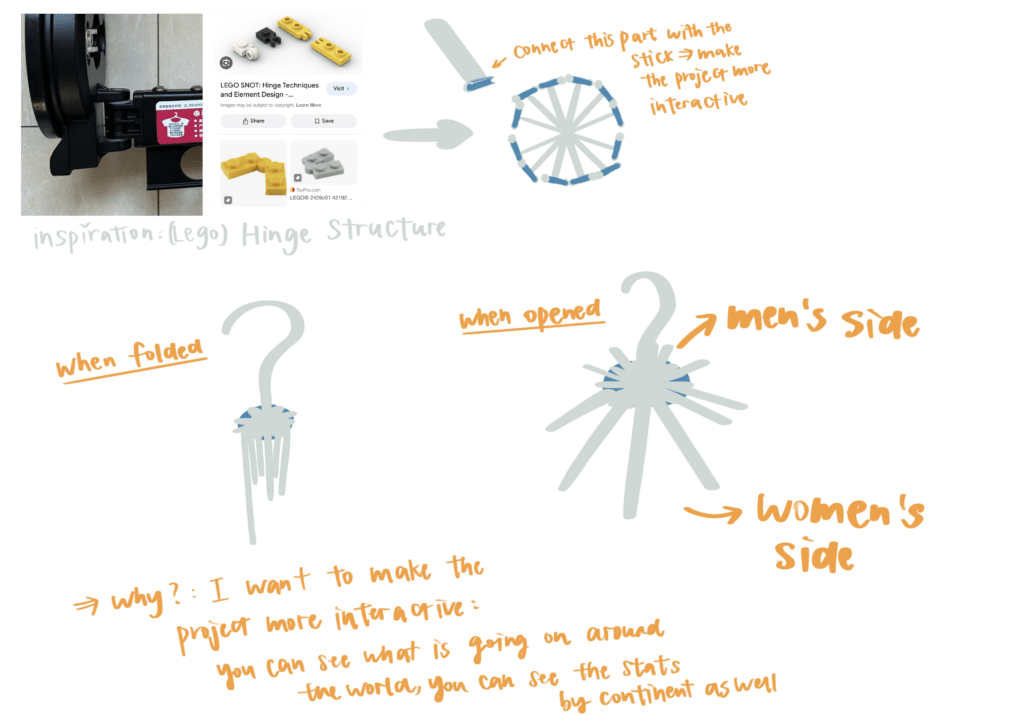
- One of the biggest thing I learned from the design of this project is that you have to think about the idea/ message you are trying to communicate. I thought about making lights/ clocks/ hairpins/ spaghetti spoons … to show the data of gender gap/ gender disparity, but I didn’t think about what do they have to do with my main idea? Sometime I tend to pack too much information into one piece, but the audience might feel confused and overwhelming.
- It is important to narrow down the topic sometimes, instead of trying to present an abstract idea. However, it is not to say that being very specific is always good because sometimes I can be limited by my thoughts. I think it is a balancing between being specific and being general.
- One of my biggest take-away from the design process is communications matter. When I got stuck with an idea, it was really helpful talking to Professor, classmates and friends, and even my family member in this case. I think my talk with my mum about this idea made me personally resonate with the data I am using, and made my future decision (eg. choosing the fabrics) clearer and easier.
🪡design of the patches/ hanging objects
- This could be one of the most interesting parts in the design process(?) I tried macrame, but the materials I got and the final result didn’t turn out to work well with the 3D object. Also, I feel like if I were to use it, there might be too much information going on at the same time, because I suspect the audience might attach most of their attention to the patterns I made, instead of looking at the sticks. It is also very confusing that what is the relationship between macrame and household work? It can only represent the handcraft part.
- I went to 城隍庙(Cheng Huang Miao Market) (a place near Yu Garden crowded with small vendors) to hunt for inspirations for the hanging objects. It was such an interesting trip! It gave me very nostalgia feelings because I used to go there a lot when I was a kid. Anyways, I got the clips and some fabrics for making the patch/ embroidery. ((Fun fact: the fabric is actually the fabric for steaming food, I think it’s called 蒸笼布 steamer mat 🙂
- Originally I was planing to use 12 handkerchieves to show the information of continent (because it reminds me of baby care), but after talking with my friends, I learned that sometimes male figures also use handkerchieves. And I found it would be better to have a variation of height in the hanging objects. That’s why I ended up having: glove, sock, handkerchief, shopping bag, sponge and cotton thread.
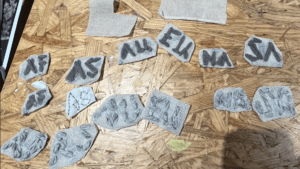
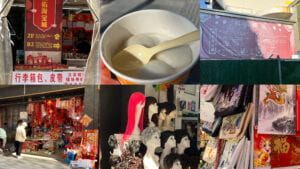
- references/ inspirations:
- Ideas for the project: Martha Rosler – Semiotics of the Kitchen 1975 | link
- This is a video I watched for a course last semester. It struck me that there are so many items in the household sphere that are commonly associated with women. After doing further research using keywords like “housework”+”gender”, I got results like:

- Women are usually expected to do so many household chores. ( Creator: Jesadaphorn Chaiinkaew | source )
- Men are usually associated with warehouse/ engineering work, while women are usually associated with cleaning/ caring work.
- Data Source: UN Statistics Division and UN WOMEN | link
- Data explanation: SDG indicator metadata | link
Technical Reflection
- At first I was trying to make a series of polar arrays to directly model my hanger in Rhino. It was successful before I decided to add the holes. (Because for the holes, I think it is polar array + linear array, a little bit too complicated.) When I was trying to add the holes, I got lost in the data sets. There were so many data trees and lists. So I gave up eventually and only used linear array. It was actually much easier for me to print with linear array because I didn’t have to rearrange them.
- For the holes, I also tried perp frames. It generate a number of equally spaced, perpendicular frames along a curve. (ref) But again, because there were too many data trees, I failed.
- I think it is a good experiment with the polar arrays. I used surface closest point and reconstruct surfaces for the sticks, however, I do suspect this is not the best choice. When I was trying to print them out for the very very first time, some sticks seemed to be more tilted than others in bambu. I guess it was because of the surface reconstruction?
- It is a little pity that I failed to make this project interactive. The hinge structure was a failure and eventually I hot-glued everything to make it look less fragile. But the final result is nice 🙂 and I did enjoy the process of trial and error.
- Below are some of my experiments and my final choices.

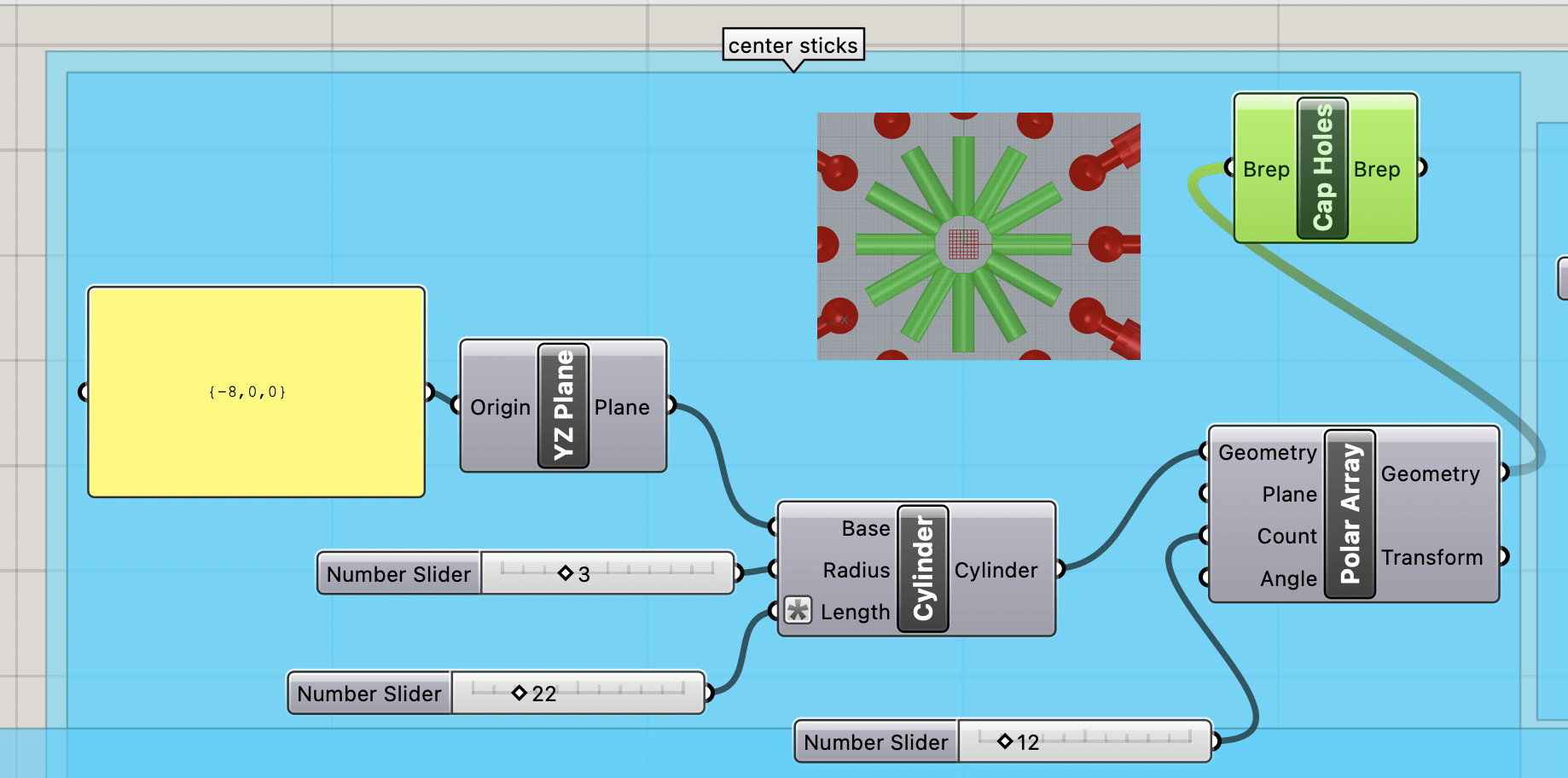




I didn’t use grasshopper to make these caps. At first Marcela helped me to import an stl. file into rhino so that I can make the hinges. However, since the cap seemed to be too thin, I reconstructed the caps by first measuring the model in the stl. file. I did: Explode Mesh – take out the inner surface – extrude mesh – join them together bake the sticks I made in grasshopper to rhino – boolean solid – print 12 caps glue them to the center plate (I couldn’t find the original file for these process : ()

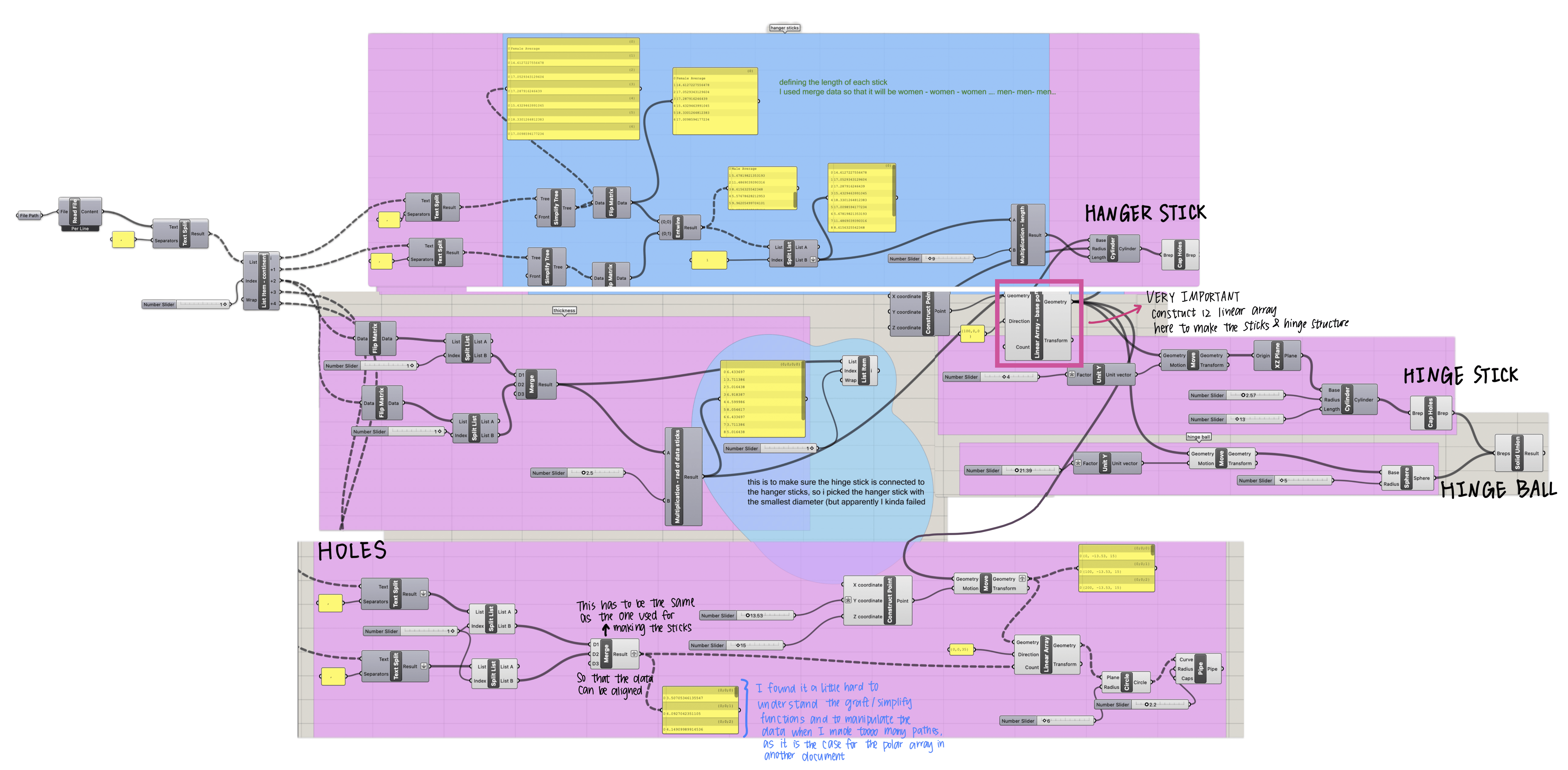
Future Improvements
- Make the installation less fragile
- My installation is very fragile right not because I hot-glued them together (by the way I also experimented with the glues. Turned out hot glue is the best option, the super glue can’t support the weight of the sticks). If I were to print a new project, I might get rid of the hinge/ joint structure and model the the sticks and the caps together, and glue the caps & the center plate.
- Incorporate more data
- I didn’t use the most original data I got from the website. The data I used was processed, so the accuracy might be affected. I would like to find more up-to-date data to update my project.
- Regarding the items hanging on the hanger, now they are chosen randomly by me. However, I’d also like to find things from each continent that best represent the housework in that continent. (Although I wouldn’t say what I have now isn’t ideal, because according to the pdf file explaining the data, the unpaid work and domestic care do cover a wide range of things.)
- Unexpected interaction with the shadow
- I didn’t realize how well the project works with different lightings! It was really amazing & interesting 🙂
- [future inspiration: next time when making a physical installation, I should take the environment into account :)]
- Project presentation
- During the end-of-semester show, I noticed that many of the audience coming were Chinese and they don’t really understand English. Next time when preparing for a project presentation, I think I should prepare a bi-lingual poster and a bi-lingual presentation so that Chinese audience can understand as well. Moreover, I had the pre-assumption that people all know I/ we use 3D printing to make our projects. However, during the show, many of the audience were curious about the materials and techniques used. In the future, further explanation on the materials should be provided.
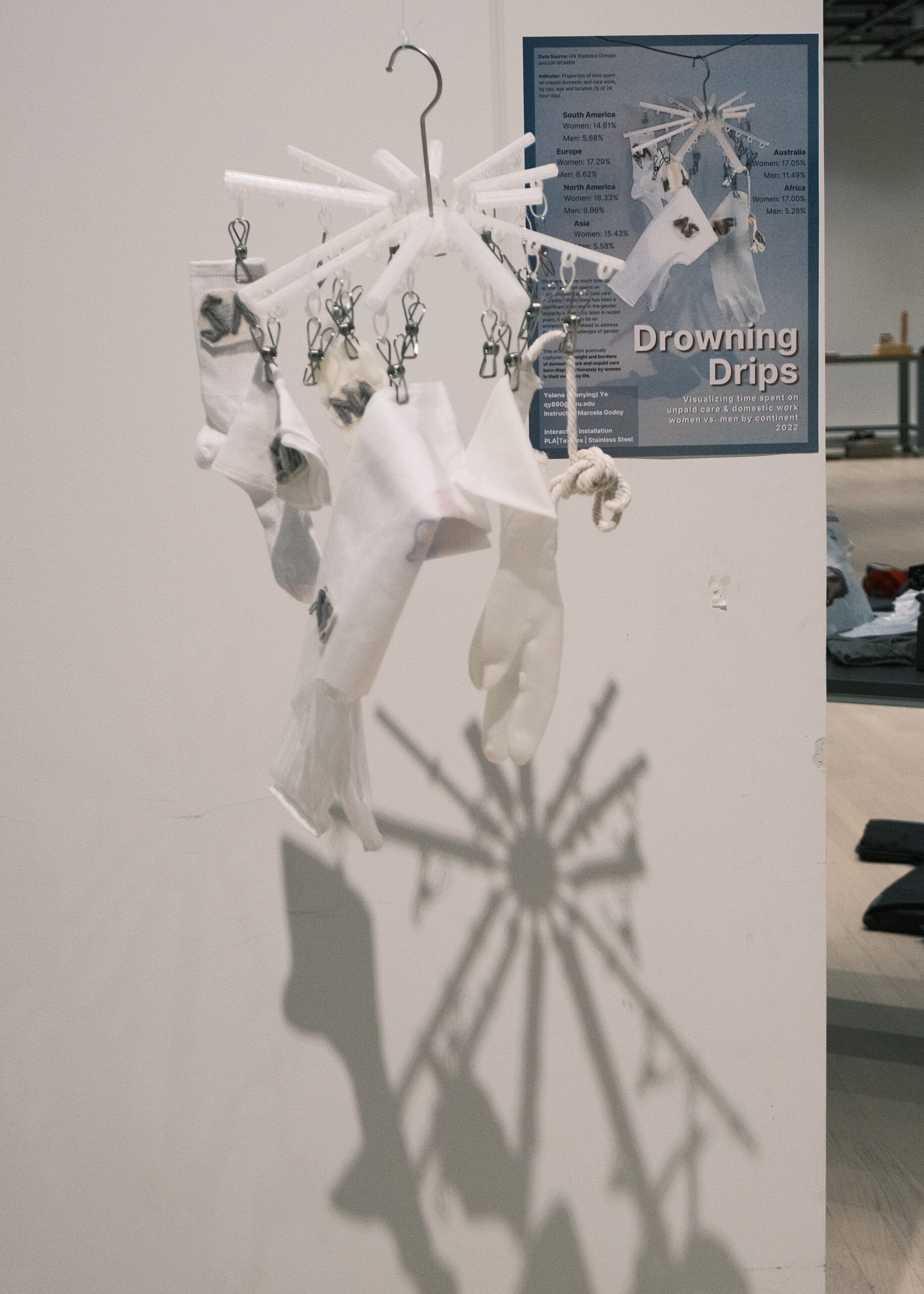
Leave a Reply